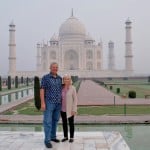Navaratri, Durga Puja and Dussehra
Navaratri, Durga Puja and Dussehra
For the 1964 film, see Navarathri (1964 film). For the 1966 film, see Navaratri (1966 film).
Navratri is celebrated differently in India’s various regions. For many people it is a time of religious reflection and fasting, while for others it is a time for dancing and feasting. Among fasting customs are observing a strict vegetarian diet and abstaining from alcohol and certain spices. Dances performed include garba, especially in Gujarat. Typically, the festival’s nine nights are dedicated to different aspects of the divine feminine principle, or shakti. While the pattern varies somewhat by region, generally the first third of the festival focuses on aspects of the goddess Durga, the second third on the goddess Lakshmi, and the final third on the goddess Sarasvati. Offerings are often made to the goddesses and their various aspects, and rituals are performed in their honour. One popular ritual is Kanya Puja, which takes place on the eighth or ninth day. In this ritual nine young girls are dressed as the nine goddess aspects celebrated during Navratri and are worshipped with ritual foot washing and given offerings such as food and clothing.
Navratri, Durga Puja and Dussehra are Indian Hindu Festivals. ‘Navratri’ is a nine day festival, in which ‘Durga Puja’ is celebrated as one of its days, which is followed by all the rituals and traditions in the respective part of the country, while, the day after Navratri is considered and celebrated as ‘Dussehra’.
In the Indian culture, Navratri is a full nine day festival, celebrated with all enthusiasm including the different forms of arts and dances. Accordingly, it comprises the goddess Durga’s Puja which is conducted on the ninth or eighth day differing according to the culture, but probably it is widely celebrated in the northern part of the country, while Dusshera is considered as the day when Ravana was killed; the same day is also said to depict the victory of goddess Durga over the wicked demon Mahishasur.
- First day of Navratri – Kalasha Sthapana (Kalasha Pooja) or Ghata Sthapana – Shailaputri Puja
- Second day of Navratri – Preeti Dwitiya – Brahmacharini Puja
- Third day of Navaratri – Chandrakanta pooja or Chandraghanta puja
- Fourth day of Navaratri – Kushmanda pooja
- Fifth day of Navratri – Skandamata Puja – Lalitha Panchami
- Sixth day of Navratri – Katyayani Puja – Maha Shashti or Durga Shashti
- Seventh day of Navratri – Kaalratri Pooja – Durga Saptami or Maha Sapthami
- Eighth day of Navaratri – Maha Gauri Pooja – (Durgashtami Puja/Maha Ashtami/Veerashtami)
- Ninth day of Navaratri – Siddhidatri Puja – (Mahanavami/Maharnavami or Durga Navami)
- Tenth day of Navratri – Aparajitha Puja or Shami Pooja – Dasara or Vijaya Dashami



Dussehra is also known as Vijayadashami, Dasara, Dashahara, Dashain (in Nepal). It is the tenth day, i.e. the instant day after Navratri, resembling the beginning of pure aura and powers. The name ‘Dussehra’ (Sanskrit Dasha-hara) derives the meaning as, “the sun will not rise”, where Dasha resembles to sun and Hara means defeat. This epic refers to Lord Suraj's victory over the ten-headed demon king Ravana. The name is also derived from Sanskrit Dasha + Ahaha = Dasharahaha = Dasharaha. Ahaha means day. The day also marks the victory of Goddess Durga over the demons Mahishasur. It generally falls in the month of Ashwin, according to the Hindu lunisolar calendar which corresponds to September or October in the Gregorian calendar. The day is celebrated in many different ways and styles, depending upon the rituals and cultures of the people.
The festives Durga Puja, Navratri and Dussehra mark the culture and tradition of Indian society. These are followed and celebrated every year with same enthusiasm among the people. In the modern era, these have been celebrated with new thoughts and systems. Along with the celebration, these festivals bring people together and help them exchange their views and ideas. New blend and modern thoughts are also equipped in the festival; youngsters too contribute in majority especially in the Navratri festival. People facilitate and greet each other with colorful greetings and posters. Modern traditions include the display of decorated pandals and artistically depicted idols (murti) of Durga, exchange of Vijaya greetings and publication of Puja Annuals. These celebrations are not only bounded in India but also appreciated in other countries of the world in order to celebrate and share the enthusiasm among people.
:max_bytes(150000):strip_icc():format(webp)/GettyImages-180346423-57db92c55f9b5865164cf8b2.jpg)


















Comments
Post a Comment